Tuber crops hold immense potential in integrated farming systems, offering opportunities to maximize yields and profits. Integrated farming systems involve combining various agricultural practices to enhance productivity and sustainability. Tuber crops, such as potatoes, sweet potatoes, and yams, are versatile and adaptable, making them ideal for integration.
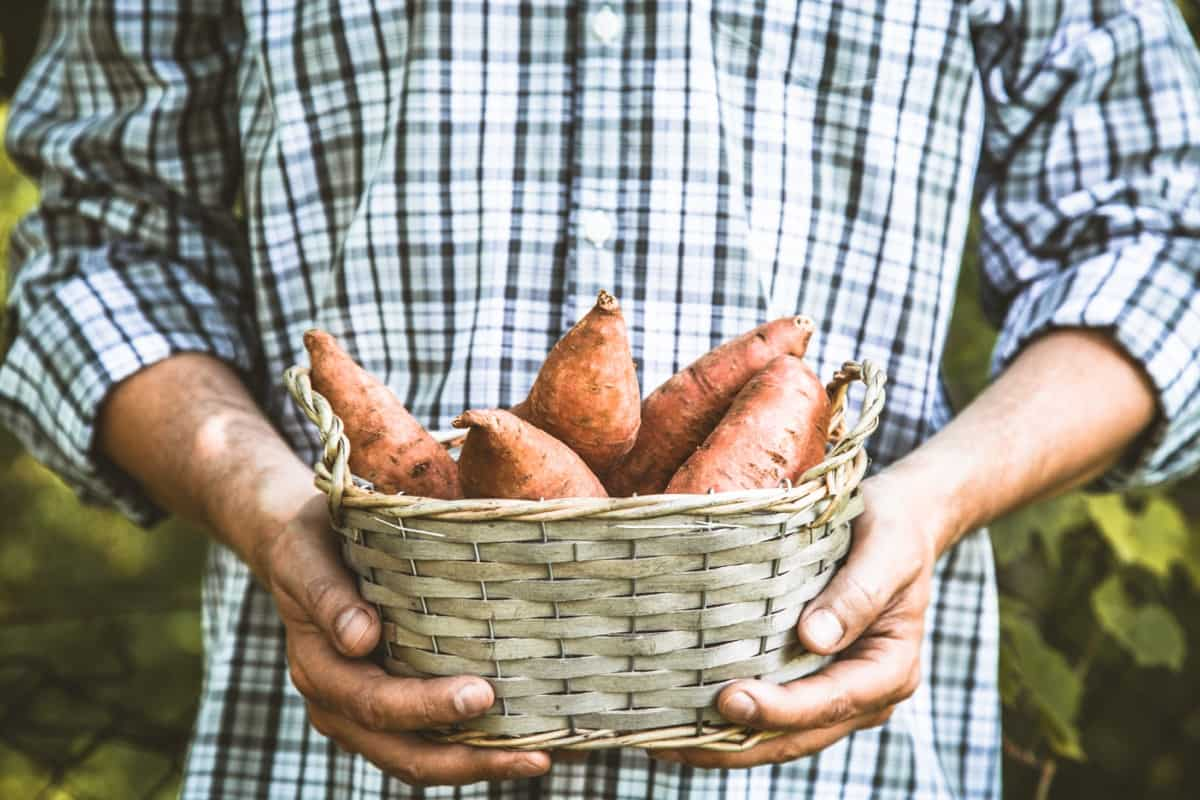
By diversifying crop choices and incorporating tuber crops, farmers can optimize land utilization and reduce risks associated with mono-cropping. These crops provide nutritional benefits and have high market demand, ensuring favorable economic returns. Farmers can harness tuber crops’ full potential and succeed in integrated farming systems through effective cultivation techniques, including companion planting, crop rotation, and nutrient management.
Tuber Crops in Integrated Farming
What are Integrated Farming Systems?
Integrated Farming System (IFS) is a sustainable agricultural approach that combines multiple farming activities to optimize resource utilization, minimize risks, and increase income for farmers. It involves the interconnection of various enterprises such as cropping, animal husbandry, fishery, and forestry. By integrating these activities, farmers can enhance productivity while preserving land productivity, environmental quality, and biodiversity.
IFS promotes the recycling of by-products and the efficient flow of nutrients among different system components, resulting in cost reduction, improved soil health, and increased production and income. This approach also provides opportunities for organic agriculture management, soil and water fertility management, and biodiversity conservation. The integration of farming enterprises supplements farmers’ income and creates employment opportunities for the rural population.
What are Tuber Crops?
Tuber crops are rich in carbohydrates and supply energy to the body when eaten. Examples of tuber crops include potatoes, sweet potatoes, yams, cassava, and taro. Tuber crops are adapted to general agroecological conditions and yield reasonably well, even under marginal environments. Potatoes, sweet potatoes, and ginger are tuberous plants, and the tubers are underground modified stems.
In case you missed it: From Orchard to Table: Mastering the Art of Post Harvest Management for Custard Apples
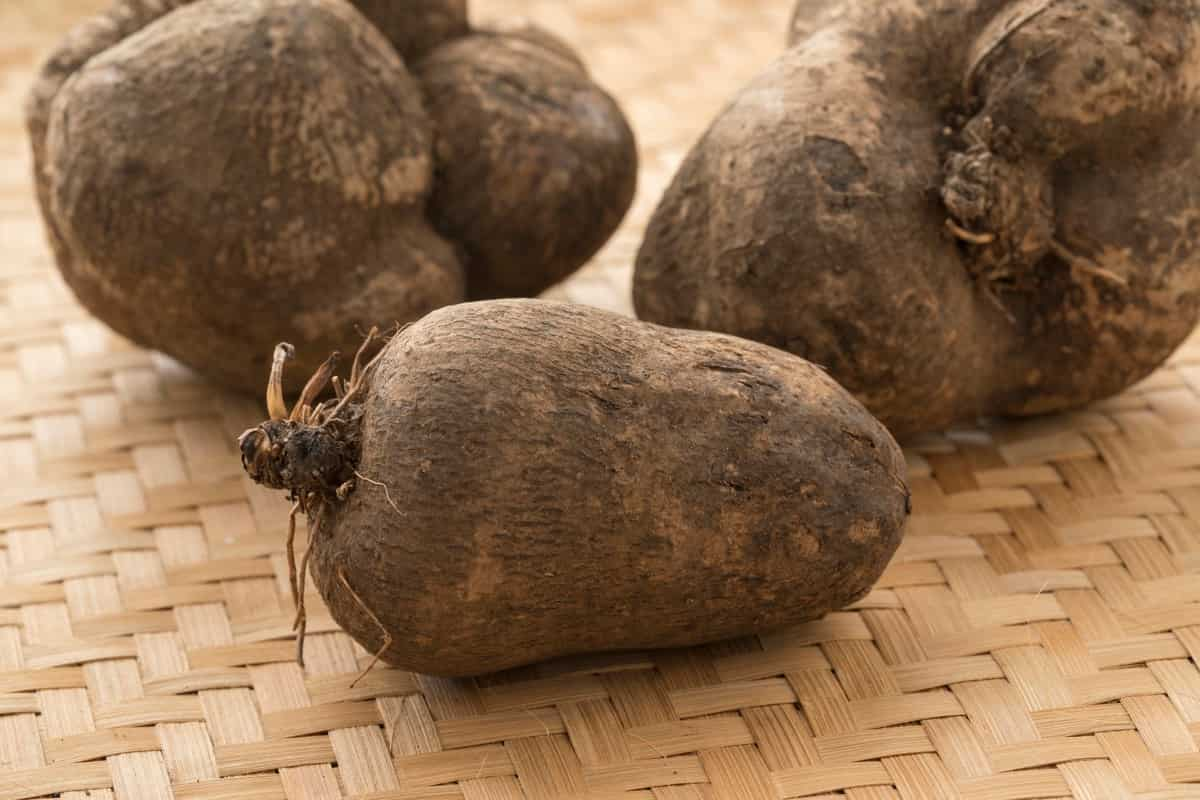
Importance of Integrated Farming Systems
- Integrated Farming Systems (IFS) offer several advantages for profitability, sustainability, and environmental safety. By cost-effectively utilizing waste materials from one component, IFS reduces production costs and eliminates the need for intermediaries.
- It promotes organic supplementation by effectively using by-products, ensuring sustained production potential. IFS enables balanced food production by linking components with diverse nutritional sources.
- It also minimizes environmental pollution through the efficient recycling of waste materials. The integration of different enterprises provides a year-round income flow for farmers. IFS encourages the adoption of new technologies and helps save energy by utilizing organic waste for biogas generation.
- It addresses fodder, fuel, and timber crises by effectively using land and promoting agro-forestry practices. Additionally, IFS generates employment opportunities throughout the year, particularly for family labor.
Tuber Crops and Their Characteristics
- Tubers are underground stalks that store food, enabling asexual propagation in certain plant species. They serve as a survival mechanism during winter or drought, providing energy and nutrients for regrowth in the next growing season.
- There are of two types: stem tubers and root tubers. Stem tubers, like potatoes, produce buds and leaves on the upper side and roots on the lower side. Root tubers like sweet potatoes have modified lateral roots that store nutrients.
- Tubers primarily comprise starch and water, with low nitrogen and fat content. They are rich in minerals like potassium, manganese, and copper, which support a healthy excretory and digestive system.
- Tubers offer several health benefits. They are the best source of essential vitamins, soluble fiber, and antioxidants like vitamin C and beta-carotene, which protect from free radicals and promote better digestion.
Tuber Crops and Their Significance
- Tropical root and tuber crops are vital for global food and nutrition security, particularly for small-scale farmers and tribal communities.
- These crops have higher edible energy production per unit area than other food crops.
- They contribute to the income of small farmers through fresh sales and value-added products.
- Tuber crops act as insurance crops, protecting against hunger and natural disasters.
- They are a good source of antioxidants, diet fiber, minerals, and vitamins B, E, and C.
- Orange and purple-fleshed tubers contain higher levels of antioxidants like β-carotene and anthocyanin.
- Cassava is considered a future food security crop due to its biological efficiency and ability to withstand climate change.
- Sweet potatoes can tolerate saline conditions, while elephant foot yam, tannia, and arrowroot are shade-tolerant.
- Tuber crops can adapt to diverse soil and environmental conditions with minimal inputs.
- The Central Tuber Crops Research Institute (CTCRI) in India conducts research and development activities on tropical tuber crops.
- Cassava, also known as tapioca, is a staple food for millions of people and is used for animal feed and industrial products.
- Sweet potatoes are versatile, rich in nutrients, and can combat the effects of climate change.
- Yams are staple foods in various regions and have medicinal properties.
- Elephant foot yam is a highly remunerative crop with high dry matter production.
- Taro is an important tuber crop in tropical and subtropical regions, mainly cultivated in India’s Eastern and Southern states.
- Tuber crops provide a potential solution for climate resilience and food security.
In case you missed it: Growing Your Profits: Crafting a Comprehensive Cassava Farming Business Plan That Guarantees Success
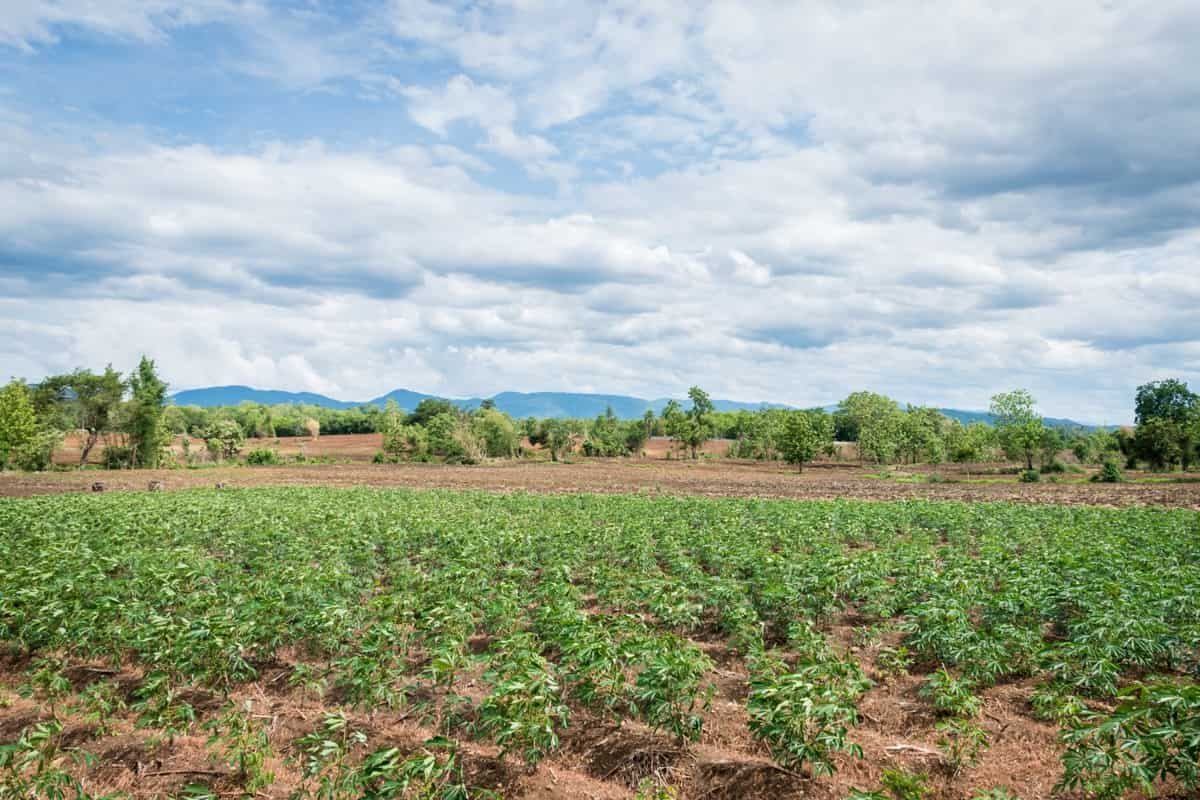
Components of Integrated Farming Systems
- Recycling: Integrated farming systems involve the efficient use of resources by recycling products or by-products from one component as inputs for another linked component. This ensures a sustainable and interconnected approach.
- Cost Reduction: Integrated farming systems aim to reduce the overall cost of production by optimizing resource utilization and minimizing external inputs. This leads to improved financial viability for farmers.
- Increased Productivity: Integrating different components increases productivity per unit area and unit time. Farmers can maximize their yields and achieve higher overall productivity by combining various enterprises.
- Total Income: Integrated farming systems contribute to increasing the total income of the farm. Farmers can generate revenue from multiple sources through diversification and integration, reducing dependency on a single enterprise.
- Family Labor Utilization: An important aspect of integrated farming systems is the effective utilization of family labor throughout the year. By integrating different activities, farmers can distribute work evenly and ensure year-round employment for family members.
Elements of Integrated Farming Systems in Tuber Crops
- Farm Ponds: Constructing farm ponds helps water conservation, irrigation, and aquaculture, providing multiple benefits within the integrated system.
- Bio-fertilizers: Using bio-fertilizers promotes sustainable nutrient management by harnessing beneficial microorganisms that enhance soil fertility and plant nutrition.
- Biogas: Biogas production from organic waste supports renewable energy generation and provides an alternative fuel source for cooking and other energy needs.
- Solar Energy: Utilizing solar energy through solar panels or solar-powered equipment reduces dependency on conventional energy sources, making the system more environmentally friendly.
- Vermi-compost Making: Vermi-composting involves using earthworms to convert organic waste into nutrient-rich compost, enhancing soil health and reducing waste.
- Green Manuring: Green manuring involves growing specific crops to improve soil fertility, control pests, and provide additional organic matter.
Role of Tuber Crops in Diversifying Integrated Farming Systems
- Diversification of Food Sources: Tuber crops, such as potatoes, sweet potatoes, yams, and cassava, play a crucial role in diversifying integrated farming systems by providing an additional food source. They offer nutritional diversity and can serve as staple crops or be processed into value-added products.
- Income Generation: Tuber crops contribute to income generation in integrated farming systems. They can be cultivated as cash crops, providing farmers with an additional source of revenue and reducing dependency on a single crop or enterprise.
- Soil Health Improvement: Tuber crops can improve soil health and fertility. They have deep root systems that help break up compacted soil, enhance aeration, and improve water infiltration. Some tuber crops, like sweet potatoes, are known for their nitrogen-fixing abilities, enriching the soil with this essential nutrient.
- Crop Rotation and Pest Management: Tuber crops can be integrated into crop rotation systems, which help break pest and disease cycles. By introducing tuber crops in the rotation, farmers can disrupt the life cycles of pests and reduce their populations naturally.
- Utilization of Marginal Lands: Tuber crops are often suitable for cultivation in marginal lands with low fertility or limited water availability. They can thrive in challenging environments and make productive use of land that may not be suitable for other crops, thereby maximizing land utilization in integrated farming systems.
- Climate Resilience: Some tuber crops, like cassava, are known for their resilience to drought and other adverse climatic conditions. By incorporating these crops into integrated farming systems, farmers can enhance their resilience to climate change and mitigate the risks associated with unpredictable weather patterns.
- Value-Added Products: Tuber crops offer opportunities for value addition and product diversification. They can be processed into different products like chips, flour, starch, and snacks, creating additional income streams for farmers and promoting entrepreneurship within the integrated farming system.
- Livestock Feed: Tuber crops can serve as a valuable source of feed for livestock. They can be used as fodder or incorporated into livestock diets, providing a nutrient-rich, cost-effective feed option.
- Sustainable Farming Practices: Tuber crops, such as organic farming and agroecology, are well-suited for sustainable farming. They require fewer chemical inputs and can be grown using environmentally friendly methods, contributing to the overall sustainability of the integrated farming system.
- Food Security and Nutrition: Farmers can contribute to food security and improved nutrition by diversifying integrated farming systems with tuber crops. Tuber crops are rich in carbohydrates, vitamins, and minerals, making them an important component of a balanced diet and addressing nutritional deficiencies.
In case you missed it: How Does Extreme Weather Affect Food Production: Reasons for Reduced Crop Yields
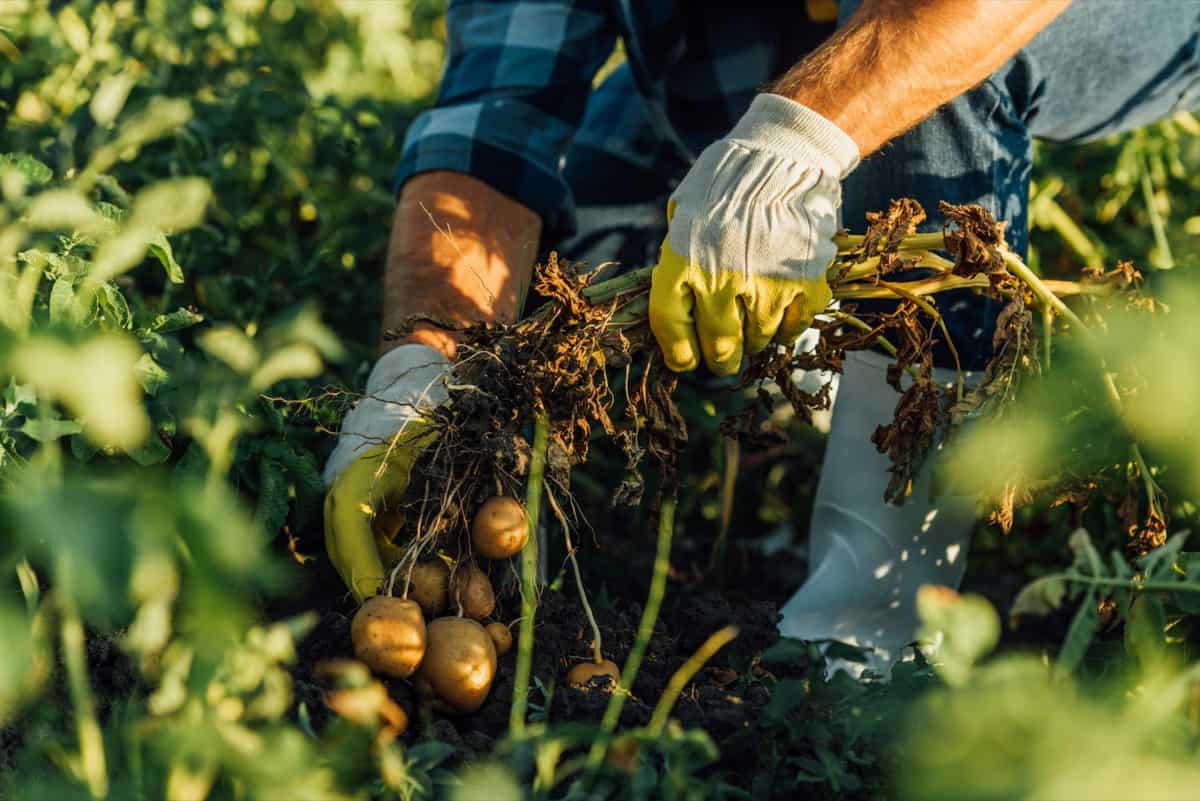
Popular Tuber Crops Suitable for Integrated Farming Systems
- Celery (Arracacia xanthorrhiza): Native to the Andes region, it is cooked and used in various dishes such as garnishes, purees, and soups. It contains calcium, phosphorus, and vitamins A, B, and C.
- Sweet potato (Ipomea batata): Consumed boiled, mashed, or fried, rich in potassium, beta-carotene, and dietary fiber. It provides calcium, iron, and vitamins A, B, and C.
- Yam or yam (Dioscorea spp): Eaten cooked, stewed, or fried, it has a variable taste and contains water, protein, dietary fiber, calcium, and iron.
- Ocumo (Xanthosoma sagittifolium): Found in Central America and popular in Hawaii, it is cooked to eliminate acrid substances. It offers calcium, phosphorus, and vitamins A, B, and C.
- Olluco (Ullucus tuberosus): A root crop from the Andean region, it is boiled and used as a thickener. It provides carbohydrates, dietary fiber, and protein.
- Potato (Solanum tuberosum L.): Originating from the Andes, it is a versatile vegetable consumed in various forms. It offers water, protein, fiber, calcium, and vitamins B and C.
- Taro (Colocasia esculenta L.): Widely spread in the Caribbean islands and America, it is toasted, baked, or boiled. It contains water, protein, calcium, iron, and vitamins B and C.
- Yuca, cassava, or cassava (Manihot esculenta): Native to the Orinoco and Amazon basins, it is consumed as flour or fried. It provides carbohydrates, fiber, calcium, and potassium.
Boosting Profits with Tuber Crops in Integrated Farming Systems
- The Nicobarese tribe, residing in the Andaman & Nicobar Islands, relies on coconut plantations and fishing for their livelihood.
- They practice a unique joint family farming system called the “Tuhet” Garden System, where the community shares land, resources, and outputs for cultivating tuber and other crops.
- The ICAR-Central Island Agricultural Research Institute (CIARI) implemented a project in the tribal village of Harminder Bay to promote tuber crops-based farming.
- Ten tribal farmers were selected to demonstrate the farming system, provided with planting materials and piglets, and trained in tuber crop cultivation.
- The crops were grown naturally without using additional manures or fertilizers, resulting in increased gross and net returns and a higher B: C ratio.
- Elephant foot yam, in particular, gained popularity among the tribal farmers, leading to increased demand and enthusiasm.
- The success of the interventions prompted more farmers to adopt the tuber crops-based integrated farming system in subsequent years.
- Demonstrations in model gardens showed significant net income and B:C ratio increases by integrating tuber crops and pigs.
- The employment generation in the system also improved, with a higher number of man-days per hectare compared to the traditional system.
- The system tripled the income of tribal farmers and increased employment generation by over 70% in the tribal areas of Little Andaman.
- Additionally, the system holds the potential to provide additional income, employment, and food availability in island ecosystems.
In case you missed it: How to Start Greenhouse Farming in Spain: Crops, 1 Acre Greenhouse Cost, Subsidy, and Loans
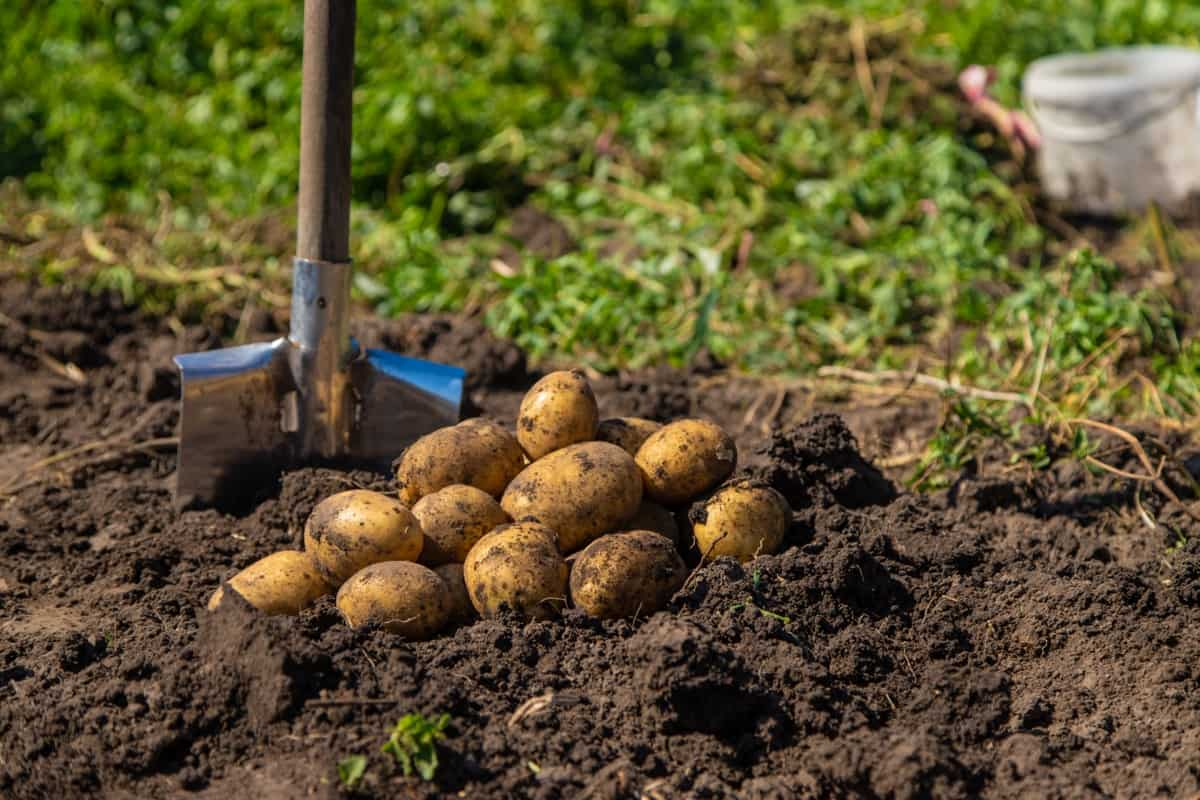
Best Practices for Cultivating Tuber Crops in Integrated Farming Systems
- Select suitable tuber crop varieties based on local conditions, market demand, and farmer preferences. Consider factors such as yield potential, disease resistance, and adaptability to the region.
- Prepare the soil adequately by incorporating organic matter, improving drainage, and ensuring proper soil pH levels. Tuber crops thrive in well-drained soils with a pH range of 5.5 to 6.5.
- Practice crop rotation to reduce the break diseases and pests cycle. Avoid planting tuber crops in the same area consecutively to maintain soil health and prevent the build-up of pathogens.
- Provide appropriate spacing between plants to ensure optimal growth and prevent overcrowding. This allows for better access to sunlight, airflow, and efficient management practices.
- Implement integrated pest and disease management strategies. Monitor crops regularly, use organic or biopesticides when necessary, and encourage natural enemies to control pests.
- Use mulching techniques to conserve soil moisture, control weeds, and maintain consistent soil temperatures. Organic mulches like straw or leaves are ideal for tuber crop cultivation.
- Practice timely and proper irrigation methods, considering the water requirements of specific tuber crops. Avoid excessive or inadequate watering, leading to yield losses or diseases.
- Harvest tuber crops at the right maturity stage to maximize quality and yield. Follow recommended harvesting techniques, such as gently loosening the soil and carefully extracting the tubers.
- Handle harvested tubers with care to minimize damage and prevent post-harvest losses. Proper cleaning, grading, and storage conditions (cool, dry, and ventilated) are essential to maintain tuber quality.
- Continuously educate and train farmers on the latest techniques, market trends, and value-addition opportunities related to tuber crop cultivation. Encourage knowledge-sharing among farmers for mutual benefit and sustainable growth.
In case you missed it: How to Start Greenhouse Farming in Turkey: Crops, Subsidy, and Loans

Conclusion
Exploring the potential of tuber crops in integrated farming systems offers a promising opportunity to maximize yields and profits. By adopting best practices, addressing challenges, and leveraging market opportunities, farmers can optimize their crop production and financial returns.
- Types of Pesticides Used in Agriculture: A Beginner’s Guide
- Economical Aquaculture: A Guide to Low-Budget Fish Farming
- 15 Common Planting Errors That Can Doom Your Fruit Trees
- How to Make Houseplants Bushy: Effective Tips and Ideas
- Innovative Strategies for Boosting Coconut Pollination and Yield
- Pollination Strategies for Maximum Pumpkin Yield
- The Complete Guide to Chicken Fattening: Strategies for Maximum Growth
- Natural Solutions for Tulip Problems: 100% Effective Remedies for Leaf and Bulb-Related Issues
- Revolutionizing Citrus Preservation: Towards a Healthier, Greener Future
- Natural Solutions for Peony Leaf and Flower Problems: 100% Effective Remedies
- Maximizing Profits with Avocado Contract Farming in India: A Comprehensive Guide
- Natural Solutions for Hydrangea Problems: 100% Effective Remedies for Leaf and Flowers
- The Ultimate Guide to Choosing the Perfect Foliage Friend: Bringing Life Indoors
- From Sunlight to Sustainability: 15 Ways to Use Solar Technology in Agriculture
- The Ultimate Guide to Dong Tao Chicken: Exploring from History to Raising
- The Eco-Friendly Makeover: How to Convert Your Unused Swimming Pool into a Fish Pond
- Mastering the Art of Delaware Chicken Farming: Essentials for Healthy Backyard Flocks
- 20 Best Homemade Fertilizers for Money Plant: DIY Recipes and Application Methods
- How to Craft a Comprehensive Free-Range Chicken Farming Business Plan
- Brighten Your Flock: Raising Easter Egger Chickens for Beauty and Bounty
- How to Optimize Your Poultry Egg Farm Business Plan with These Strategies
- Subsidy for Spirulina Cultivation: How Indian Government Schemes Encouraging Spirulina Farmers
- Ultimate Guide to Raising Dominique Chickens: Breeding, Feeding, Egg-Production, and Care
- Mastering the Art of Raising Jersey Giant Chickens: Care, Feeding, and More
- Ultimate Guide to Raising Legbar Chickens: Breeding, Farming Practices, Diet, Egg-Production
- How to Raise Welsummer Chickens: A Comprehensive Guide for Beginners
- How to Protect Indoor Plants in Winter: A Comprehensive Guide
- Ultimate Guide to Grow Bag Gardening: Tips, Tricks, and Planting Ideas for Urban Gardeners
- Guide to Lotus Cultivation: How to Propagate, Plant, Grow, Care, Cost, and Profit
- Agriculture Drone Subsidy Scheme: Government Kisan Subsidy, License, and How to Apply Online
- Ultimate Guide to Raising Araucana Chickens: Breed Profile, Farming Economics, Diet, and Care
- Bringing Hydroponics to Classroom: Importance, Benefits of Learning for School Students
- Ultimate Guide to Raising Polish Chickens: Breed Profile, Farming Economics, Diet, and Care
- Ultimate Guide to Raising Australorp Chickens: Profile, Farming Economics, Egg Production, Diet, and Care
- Silkie Chicken Farming: Raising Practices, Varieties, Egg Production, Diet, and Care
- Sussex Chicken Farming: Raising Practices, Varieties, Egg Production, Diet and Care